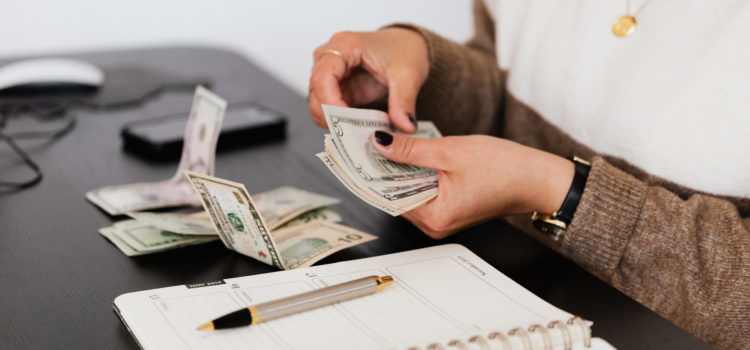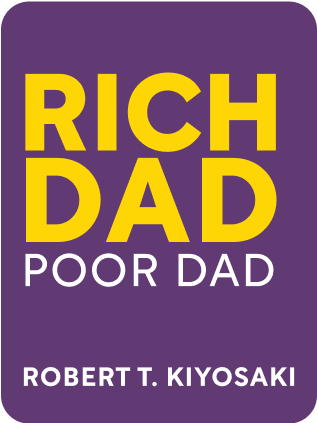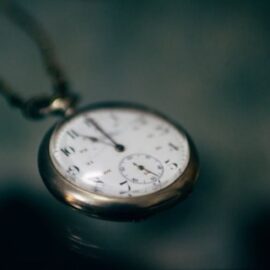

This article is an excerpt from the Shortform summary of "Rich Dad Poor Dad" by Robert T. Kiyosaki. Shortform has the world's best summaries of books you should be reading.
Like this article? Sign up for a free trial here .
What Rich Dad, Poor Dad‘s cash flow chart, and what can it teach you about managing and making money?
The Rich Dad, Poor Dad, cash flow chart addresses an important basic principle of finance: having consistent cash flow helps make you rich. You can look to the Rich Dad, Poor Dad cash flow chart to understand how money generates money.
How Can The Rich Dad, Poor Dad Cash Flow Chart Help You?
Rich Dad, Poor Dad‘s cash flow chart offers a unique idea. When you work for an employer, you get paid only a fraction of the value that you generate for the employer (otherwise, if the business would go bankrupt). Say your salary is $50k a year. Your work may allow your employer to earn $100k in sales that year, yielding a clean profit after deducting your salary.
- Even further, if your work isn’t just a pure service but also builds value in the company – say in R&D or product improvement – the value may be many multiples of your salary.
The key to financial independence is having money that makes more money. You want your money to make enough money that you don’t have to work anymore. You can see this philosophy clearly outlined in the Rich Dad, Poor Dad cash flow chart below.
The Rich Dad, Poor Dad Cash Flow Chart and Balance Sheet
Consider how the cash flow chart and balance sheet relate to each other. Here’s the balance sheet:
The top box is an income statement, measuring how much income you get in a period, and how much expenses you pay out.
The bottom diagram is the balance sheet. It shows how much in assets and liabilities you have. Assets are things that make money over time. Liabilities are something that spend money over time. (Shortform note: these are Robert Kiyosaki’s terms and don’t follow typical GAAP accounting.)
We’ll get more into distinguishing assets vs liabilities in the next section, but the main point here is that wealthy people use their Income to buy Assets that return more Income. Meanwhile, they minimize their spending on Expenses and buying Liabilities, to have more money to buy more Assets. Rich Dad, Poor Dad‘s cash flow chart looks like this:
People who don’t become rich either spend all their income on expenses, or buy liabilities that increase their expenses but don’t add income.
Consider that “money earning money” is your business. Your profession is how you draw a salary. Your business is how, independent of you, your money makes more money.
- Rich Dad, Poor Dad uses McDonald’s as a surprising example. McDonald’s isn’t a hamburger business – it’s in the real estate business. The profession is selling hamburger franchises, but the business is accumulating income-producing real estate.
Tips for Utilizing the Cash Flow Chart
The cash flow chart seems simple, but there are some things you need to keep in mind if you’re going to utilize it.
Acquire Real Assets
If you are going to use the Rich Dad, Poor Dad cash flow chart, you will need assets. So what are real assets?
- Businesses that don’t require your presence. You own them, but they’re managed by other people. If you have to work there for it to generate money, it becomes your job.
- Only start a business if you have a desire for it. The odds are against you and the stress is high. You don’t have to make money this way.
- Stock, bonds, funds, and other securities.
- Kiyosaki once liked tax liens, which he claims returned 16%, but says since then more attention has made this less profitable.
- Income-generating real estate. In particular:
- Using debt to lever up on more houses. In other words, with $500k, you could buy one $500k house and use it to make income. Or, you could pay $100k down payments for 5 houses and get rental income from 5 houses.
- (Shortform caveat: note that with more leverage, if the houses lose value, you also magnify your losses, as in the 2008 recession.]
- Buying under-market properties, like from foreclosures, and reselling them quickly.
- Kiyosaki notes that today foreclosures are competitive and he’s looking elsewhere.
- Using steady cash flow from rental income to make riskier bets, like in the stock market.
- Consider buying property that’s larger than what you need. Then sell off a piece to someone else. This will let you broaden the opportunities you find.
- When selling a property, trade it for a larger one to avoid immediate taxes on the gain. (Section 1031)
- Using debt to lever up on more houses. In other words, with $500k, you could buy one $500k house and use it to make income. Or, you could pay $100k down payments for 5 houses and get rental income from 5 houses.
- Notes (IOUs).
- Royalties from intellectual property such as music, scripts, patents.
- Anything that has value, produces income, appreciates, and has a ready market.
(Shortform note: Rich Dad, Poor Dad contains lots of (possibly embellished) examples of super-profitable real estate deals. Unfortunately the book doesn’t cover how to find or generate valuable assets, which is a much more complicated topic and specific to the industry, so they may not be the best examples of cash flow in Rich Dad, Poor Dad).
Think about each dollar as your employee that works 24 hours a day tirelessly to make you more money.
The tradeoff between today’s expenses and future income should be clear. Every dollar you spend today is a dollar that does not work for you again, in perpetuity.
Further, avoid situations where you have to dip into savings or investments. Find creative ways to come up with the money, and protect your assets.
Pay Yourself First
According to the Rich Dad, Poor Dad cash flow chart, it can be more financially effective when you pay yourself first. Most people have the habit of paying their bills first, then saving whatever money is left.
Rich Dad inverted this – he bought assets first, then paid his bills as late as possible. His reasoning – the threat of having bill collectors was supremely strong motivation to creatively find ways to make more money.
In contrast, paying yourself last gives little pressure to generate more money. Paying yourself first, on the other hand, forces you to have to find creative ways to make money.
In Rich Dad, Poor Dad, cash flow is key to understanding how to make money and how to keep money, and the Rich Dad, Poor Dad cash flow chart can help you continue to earn money no matter your job status.

———End of Preview———
Like what you just read? Read the rest of the world's best summary of Robert T. Kiyosaki's "Rich Dad Poor Dad" at Shortform .
Here's what you'll find in our full Rich Dad Poor Dad summary :
- The key differences in how rich dad and poor dad approached life
- Why it's a terrible idea to buy an expensive house
- How to overcome your own mental blocks to become wealthy for life






